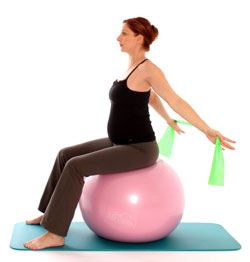Post Natal Fitness and Pilates
So you’ve survived the roller coaster that is pregnancy, welcomed your precious bundle of joy into the world and are slowly beginning to wonder when you are going get your body back into pre-pregnancy shape or any recognizable shape for that matter!

First off enjoy your baby and the time that you spend with him/her, these are important moments in both your life and your baby’s life that you will never get back.
In today’s world with all the bombardment of social media and celebrity pre and post baby three week “miracle” transformations from flab to fab it’s easy to start thinking that this is the norm and all new mothers will (and should) snap back into their old bodies in the blink of an eye. This is not so and it is not necessary either.
A few things that are important to remember as you attempt to ease back into a fitness routine:
- You NEED to get a doctor’s OK to start exercising- your gynecologist is the right person to give you this advice. They have seen you through your pregnancy and will be able to advise you when it is the right time for YOU to start exercising. The text book 4-6 weeks doesn’t apply to everyone. Having said that, simple exercises like Kegels can be done almost immediately after delivery if you are up to it.
- Each body and each pregnancy is different- what may have worked for your friend or for you in your first pregnancy may not work for you now.
- Get enough sleep, in the first few years most mothers are sleep deprived and there are days when the last thing you want to do is exercise when you are running on 3 hours of sleep. Sleep is a crucial part of your body’s recovery process.
- Proper nutrition is vital not just for you but for your baby especially if you are breastfeeding. You can lose up to 500 calories while breastfeeding! Simple home cooked meals that are nutrient rich and low on empty calories are important. Especially in the Indian context where new moms are regularly faced with wanted and unwanted advice from well-meaning relatives on what foods will increase breast milk supply (This seems to be an obsession with all the older women in most families!). A lot of these home cures are heavy on sugar, fats and are basically desserts in disguise and will take you further away from your efforts to lose weight or stay healthy. It’s also very important to stay hydrated both from a breast feeding point of view and also to avoid constipation.
- It is also important to understand that your body has undergone some major changes in the last 9 months. Your ligaments (the scaffolding that holds your joints in place) have loosened up to enable the baby to pass through your pelvis. Going straight into high intensity exercise may not be advisable initially as you are likely to injure yourself.
- Start slowly, listen to your body and know when to stop or alter your exercise intensity.
Pilates is a great choice for new mothers for many reasons
- Its focus on developing core strength is exactly what you need after pregnancy.
- It restores a more neutral alignment in your spine
- It is rehabilitative especially if you have conditions like diastasis recti
- It’s a great way to reconnect with your own body, many times a difficult labor and delivery leaves women with both physical and mental trauma that leaves them feeling that they are not in control of their own body.
- Pilates exercises strengthen the pelvic floor muscles which are stretched and weakened during pregnancy and child birth. A weak pelvic floor leaves many women with urinary or fecal incontinence and sometimes more seriously a pelvic organ prolapse.
In the next post we will go into more details on how to engage your pelvic floor muscles, what exactly is a diastasis recti and how to exercise safely without worsening the condition.
The more important thing is to remember that your exercise routine post pregnancy should be something you look forward to and enjoy, something that doesn’t exhaust you to the point you are unable to rise up to the challenging demands of motherhood!
MOST COMMENTED